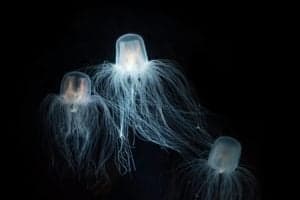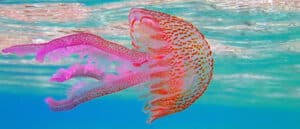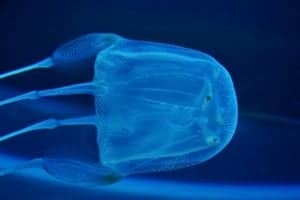Jellyfish are fascinating animals. Some jellyfish live in the deep sea, far enough that we’ll likely never see them! Although most jellyfish we encounter on beaches and along the coast aren’t deadly, a few can be! It’s better to be safe, than sorry. But, what s the most dangerous jellyfish found in U.S. waters? Are they common? Follow along to find out!
What is the Most Dangerous Jellyfish in U.S. Waters?
The most dangerous jellyfish in the United States is the Alatina alata, also called the sea wasp. Another name for this jellyfish species is the winged box jellyfish. Previously, the species was named
Carybdea alata. This box jellyfish has a long range and a powerful sting. It was first recorded in 1830. Although box jellyfish are venomous and one of the most dangerous animals in the world, the Alatina alata’s stings are rarely fatal. Instead, the stings leave an uncomfortable and burning rash for about 20 minutes. However, pain can continue for about 2 hours.

The most dangerous jellyfish in the United States is the Alatina alata, also called the sea wasp.
©Suzan Meldonian/Shutterstock.com
About the Sea Wasp
Jellyfish are unique creatures. Although the Alatina alata was only recorded in 1830, we’ve learned a lot about this jellyfish species. Follow along to learn more about the animal, including its size, range, diet, and potential predators.
Appearance and Size
So, what does a sea wasp look like? Sea wasps are transparent and smooth with a notable rounded tip umbrella. As their name suggests, they have four wing-like pedalia with pinkish-yellow tentacles. They are also about 25 centimeters long and about 1/2 to 1/3 as wide.
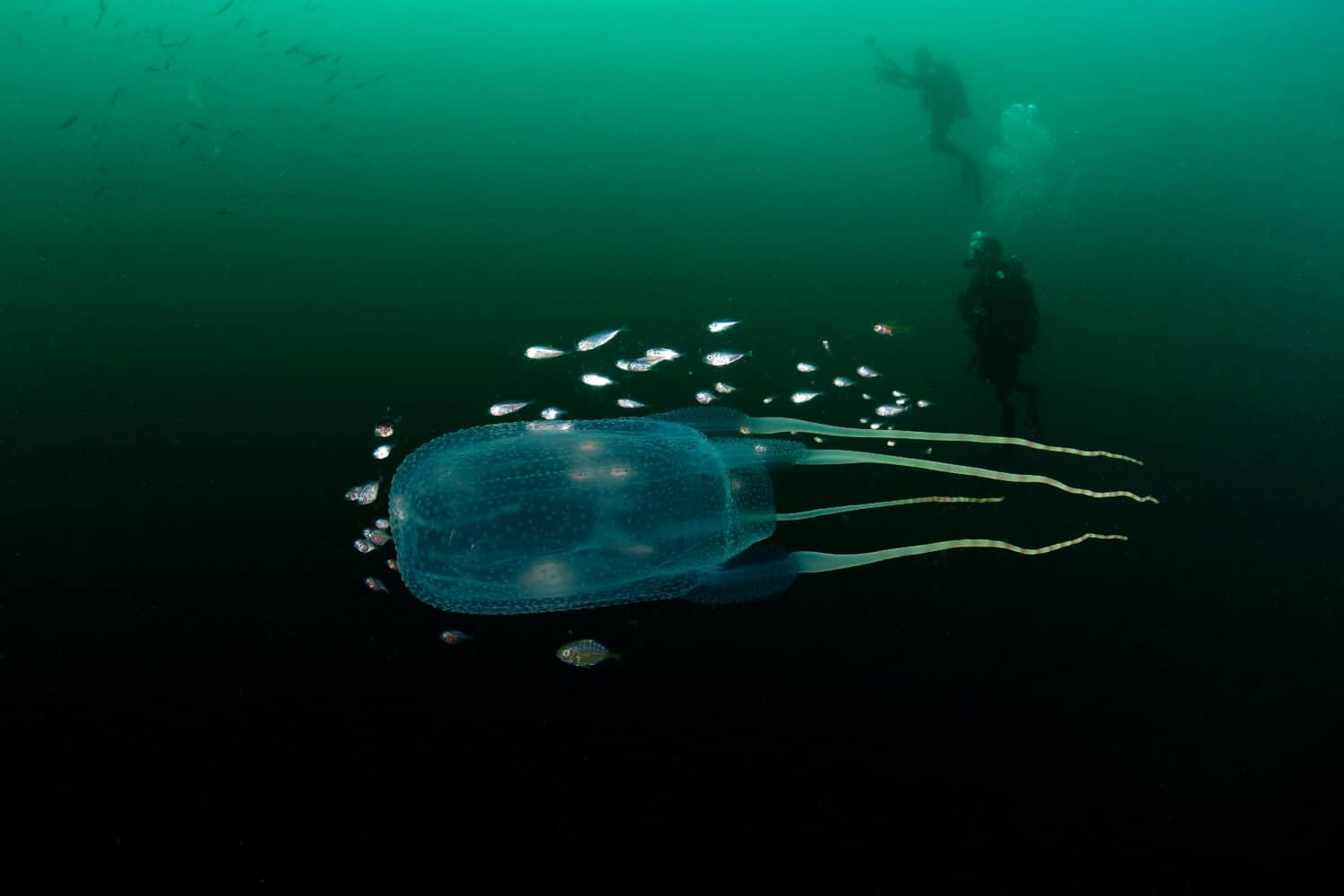
Sea wasps are about 25 centimeters long and about 1/2 to 1/3 as wide.
©Humberto Ramirez/Shutterstock.com
Distribution and Habitat
This box jellyfish species isn’t picky about its environment. However, they spend a lot of their time near shore waters. They also live in the deep sea. Sea wasps are found throughout the Pacific and Atlantic Oceans. In the United States, they are most often found on the eastern coast. Alatina alata are strong swimmers. They’ve been recorded in depths up to 3,500 feet. They’ve also been recorded and observed on the surface of the water.
Diet
Using their long tentacles, this jellyfish species consumes zooplankton. They also eat caridean shrimp and worms. Interestingly, in a study, researchers observed that most Alatina alata had empty stomachs.
Predators
Not a lot of animals are daring enough to try and hunt an Alatina alata. Their stings are painful. However, sometimes One of the only brave animals to eat box jellyfish is the green sea turtle. Green sea turtles have thick skin, so a box jellyfish’s sting, doesn’t affect them.
The World’s Most Dangerous Jellyfish
The Alatina alata isn’t the most dangerous jellyfish in the world as stings are thankfully, rarely fatal. Instead, the world’s deadliest jellyfish is the Australian box jellyfish. Just one quick sting from this deadly jellyfish and it’s enough to cause paralysis and a heart attack! This jellyfish species sports tentacles about 10 feet long. Although 10 feet long, when swimming, the tentacles contract and are only about 5.9 inches long. Interestingly, they also have 24 eyes. Unlike the Alatina alata, this jellyfish species consume small fish. They are most common in Australia and have been directly linked to about 64 deaths. Sometimes, when the stings cause paralysis, it leads to drowning. Sadly, the risk is higher with small children.
What to do If you’ve Been Stung by a Jellyfish
At least 150 million people every year get stung by jellyfish, however, the majority of stings are mild and don’t result in hospitalization. Still, it’s a scary experience, and important to know what to do if you suspect you’ve been stung by a jellyfish.
Firstly, it’s important to remain calm. Although this reminder may sound silly, a lot of deaths in the ocean are a direct result of panicking, which leads to drowning. Treatment though, varies and depends on the species. If you’ve been stung by a box jellyfish, experts recommend applying vinegar to the wound as soon as you get out of the water. Vinegar alleviates the stinging sensation and stops venom from releasing. You can also rub baking soda or salt water on the wound. As soon as you’re out of the water and before treatment, call 911, or tell someone else to as you never know if your symptoms are mild or severe.
Box jellyfish stings can cause tightness in the chest, nausea, and muscle spasms. When they sting, a red whipped-shape lesion is left behind. Sometimes, it blisters. You mustn’t rinse the sting with fresh water as this can spread the venom. Although movies have depicted using urine on a jellyfish sting, it’s not recommended.
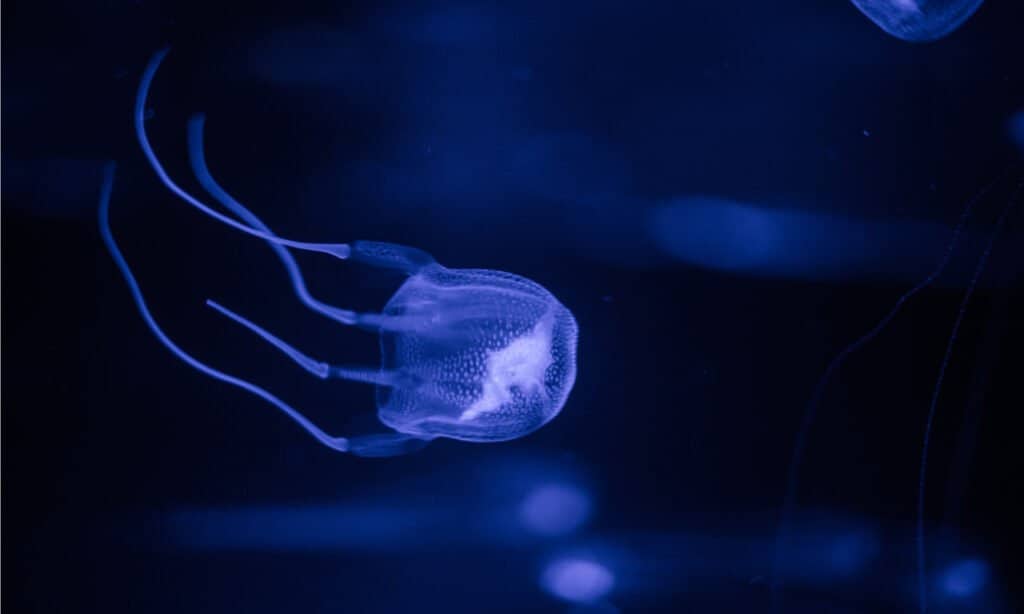
If you’ve been stung by a box jellyfish, calmly get out of the water and use salt water, baking soda, or vinegar to stop the venom.
©Dewald Kirsten/Shutterstock.com
The photo featured at the top of this post is © Humberto Ramirez/Shutterstock.com
Thank you for reading! Have some feedback for us? Contact the AZ Animals editorial team.




